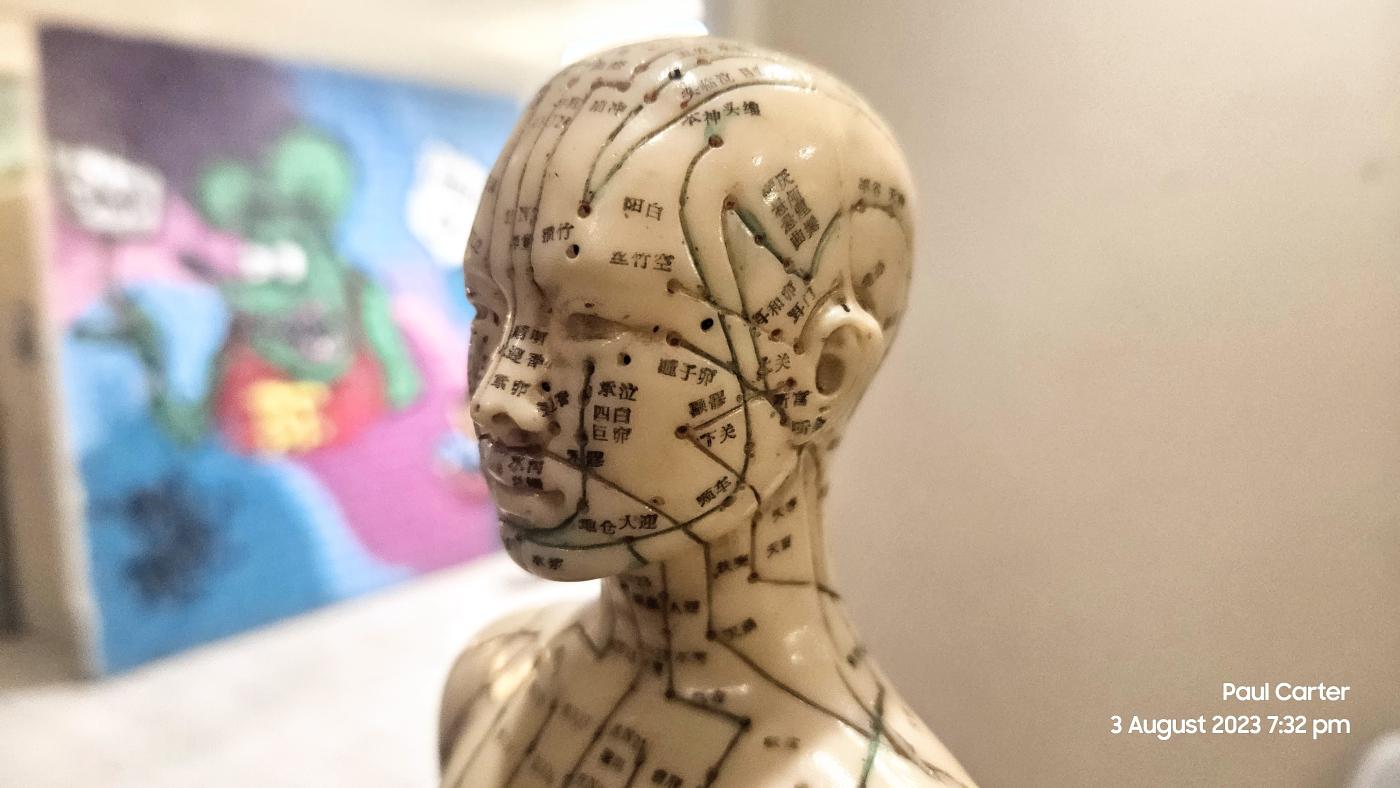Headache Treatment Hervey Bay
Did you know that acupuncture could be associated with slightly better outcomes and fewer side effects when compared to routine care or acute headache medication? (Linde et al., 2016)
Book Acupuncture For Headache Now

Did you know that acupuncture could be associated with slightly better outcomes and fewer side effects when compared to routine care or acute headache medication? (Linde et al., 2016)
Book Acupuncture For Headache Now
Hi I’m Paul Carter, a registered acupuncturist and Herbalist, welcome to my page dedicated to acupuncture for headaches, proudly serving the Hervey Bay community.
Experiencing recurring headaches can significantly impact your daily life, affecting everything from your work performance to your personal relationships. While there are many options for headache relief, one holistic and natural method that has stood the test of time is acupuncture.
Acupuncture, rooted in the rich traditions of Chinese medicine, is more than just a means to alleviate symptoms; it aims to target the root cause of your headaches. This ancient practice involves inserting fine, sterile needles into specific points in the body, helping to restore balance and stimulate the body’s natural healing process. It’s a method of treatment that has been used for thousands of years and is gaining recognition in modern healthcare for its potential benefits, including the management of both tension-type headaches and migraines.
Evidence from The Acupuncture Evidence Project underscores the effectiveness of acupuncture for headaches. According to this comprehensive review, acupuncture has strong evidence for the effectiveness in the prevention of migraines. Additionally, it suggests that acupuncture may be a beneficial treatment for frequent episodic or chronic tension-type headaches (McDonald J, Janz S, 2017).
We invite you to explore this page to learn more about how acupuncture can offer relief from persistent headaches. You’ll find insights into the benefits of acupuncture, what to expect in a session, and how we in Hervey Bay are dedicated to using this traditional practice to support your overall wellbeing. Join countless others who have found a reprieve from their headaches through the restorative power of acupuncture.
A headache is a sensation of discomfort or pain in the region of the head or neck. They are one of the most common medical ailments, with most people experiencing a headache at some point in their lives.
Headaches can be categorised into primary and secondary headaches:
The treatment for headaches varies depending on the type of headache and its cause. It might be as simple as getting more rest and drinking more water, or it may involve medications. In some cases, headaches can be managed with complementary health practices such as acupuncture. If you experience persistent or severe headaches, it’s crucial to seek professional medical advice to properly diagnose and manage the condition.
Acupuncture is a key component of traditional Chinese medicine and is increasingly being recognised in Western medicine for its potential benefits in managing a variety of health conditions, including headaches. This ancient practice involves the insertion of thin needles into specific points on the body to stimulate the body’s natural healing processes and restore balance. In the context of Chinese medicine philosophy, it is believed that acupuncture helps to rebalance the body’s vital energy, or “Qi”, thereby promoting overall health and wellbeing.
In terms of its application for headache relief, multiple clinical trials and systematic reviews have found acupuncture to be a potentially effective treatment for both tension-type headaches and migraines. The mechanism by which acupuncture achieves this is thought to be multifaceted, including the release of endogenous opioids and other neurotransmitters, regulation of blood flow, and modulation of pain processing in the central nervous system.
One of the most comprehensive reviews, conducted by Cochrane, found that acupuncture could be associated with slightly better outcomes and fewer side effects when compared to routine care or acute headache medication (Linde et al., 2016). Additionally, a study published in the Journal of the American Medical Association found that acupuncture was superior to both sham acupuncture and routine care in reducing headache frequency in individuals with chronic headaches (Vickers et al., 2012).
Remember that while acupuncture may help relieve headache symptoms, it’s not a standalone treatment for underlying causes. If you’re suffering from persistent headaches, it’s crucial to consult with your healthcare provider to diagnose and manage any potential underlying health conditions.
Attending an acupuncture session for the first time can be an intriguing experience, especially if you’re not sure what to expect. Below is a step-by-step description of a typical acupuncture appointment:
Remember, everyone’s experience with acupuncture is unique. How you feel during and after treatment can vary widely from person to person. Some people feel relaxed and others feel energised. It’s important to communicate with Paul throughout the process, especially if you have any concerns or if you experience any discomfort.